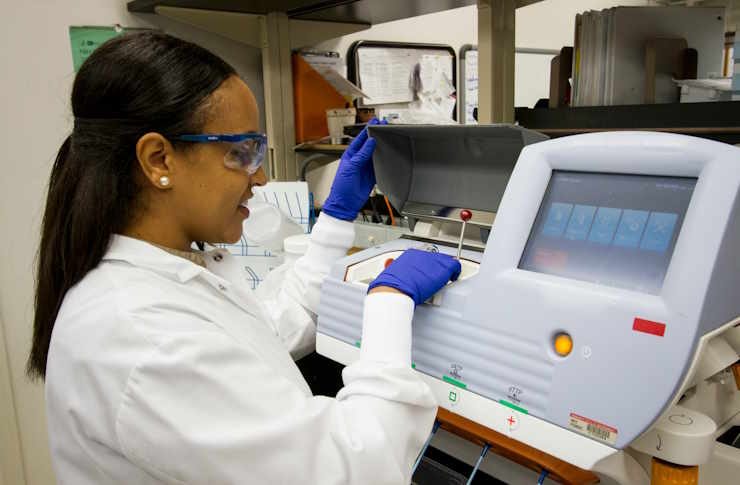How degradation products affect tissue health
Degradation products released from implanted materials can interact with surrounding tissue in multiple ways, influencing cellular behavior, immune responses, and long-term device performance. This article outlines mechanisms by which breakdown products impact tissue health, the common tests used in preclinical evaluation, and considerations for safety and regulatory review.

Implanted materials do not remain inert indefinitely. As polymers, metals, ceramics, or composites degrade — through mechanical wear, chemical hydrolysis, corrosion, or enzymatic action — they release small molecules, ions, particles, or altered surface chemistries. These degradation products can modify local pH, act on cellular receptors, or trigger immune pathways, producing outcomes that range from benign remodeling to chronic inflammation and impaired tissue integration. Understanding these pathways is central to predicting device performance and planning appropriate preclinical safety testing.
How do degradation products affect cellular responses?
Degradation products can influence cell adhesion, proliferation, and differentiation. Small molecules or ions may enter cells and disrupt metabolic pathways or mitochondrial function, contributing to cytotoxicity at sufficient concentrations. Particulate debris can be phagocytosed by macrophages, altering macrophage phenotype and cytokine release. Over time, shifts in the local microenvironment may impede tissue regeneration, alter extracellular matrix deposition, or stimulate fibrotic encapsulation, all of which affect device integration and function.
What is the role of cytotoxicity and inflammation?
Cytotoxicity testing evaluates how released substances affect cell viability in vitro, offering an early signal of potential tissue harm. In vivo, continued exposure to degradation products can sustain or amplify inflammation. Acute inflammation is part of normal healing, but persistent proinflammatory signaling can delay repair, encourage chronic inflammatory cell infiltration, and lead to tissue damage. Linking in vitro cytotoxicity results to in vivo inflammation requires careful dose and exposure modeling representative of realistic degradation rates.
How does surface and materials choice influence tissue?
Surface chemistry and microstructure determine how materials degrade and what byproducts form. Hydrophobic polymers may undergo oxidative chain scission producing low–molecular–weight fragments, while metals can corrode to release ions that interact with proteins and cells. Surface roughness and coatings affect protein adsorption, which modulates cellular recognition and immune activation. Selecting materials with predictable degradation pathways and controlling surface finishes can reduce unfavorable tissue reactions and improve long-term compatibility.
How do implants affect hemocompatibility and sensitization?
When degradation products enter the bloodstream or come into contact with blood-rich tissues, hemocompatibility becomes critical. Certain ions or particles can activate coagulation or complement pathways, altering thrombosis risk. Additionally, some breakdown molecules act as haptens and bind to endogenous proteins, creating neoantigens that may induce sensitization or allergic responses. Monitoring both local tissue reactions and systemic immune markers is important when materials have potential to release bioactive species.
What preclinical safety testing is used for degradation?
Preclinical evaluation combines chemical characterization of degradation products with biological assays. Accelerated aging and simulated-use studies estimate release profiles. In vitro assays assess cytotoxicity, hemocompatibility, and inflammatory mediator release. Implantation studies in relevant animal models examine local tissue responses, fibrous capsule formation, and systemic distribution of degradation products. Integrating analytical chemistry, histology, and functional endpoints helps regulators and developers understand risk and set appropriate safety margins.
How do sterilization and regulatory pathways relate to safety?
Sterilization methods can alter material surfaces or accelerate degradation, changing the identity and quantity of released products. Regulatory submissions therefore require documentation of sterilization effects, stability data, and safety testing that reflects the final sterilized device. Regulatory agencies expect clear characterization of materials, degradation kinetics, and toxicity testing aligned with recognized standards. Demonstrating consistent manufacturing, validated sterilization, and robust preclinical data supports a reasoned assessment of safety.
This article is for informational purposes only and should not be considered medical advice. Please consult a qualified healthcare professional for personalized guidance and treatment.
Conclusion Degradation products are an inherent consideration in implant design and evaluation. Their chemical nature, concentration, and persistence influence cellular responses, hemocompatibility, and immune activation. Thorough material selection, surface control, and a combination of in vitro and in vivo testing are necessary to anticipate tissue-level effects and support regulatory review. Clear characterization and realistic exposure modeling improve the ability to predict outcomes and guide safer device development.






